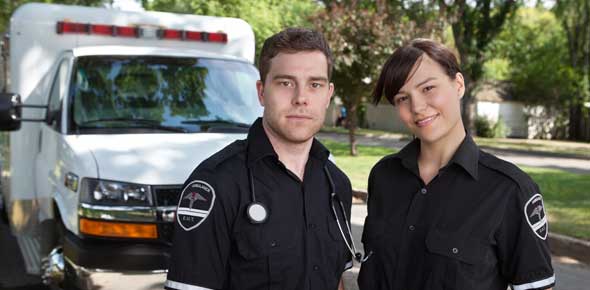Paramedic Module 2

This is based upon the airway management chapter of paramedic book. . . This test is to drill me for my quizzes
- 1.
The depression between the epiglottis and the base of the tongue is called the
- A.
Nare
- B.
Glottis
- C.
Larynx
- D.
Vallecula
Correct Answer
B. Glottis -
- 2.
The average volume of gas inhaled or exhaled in one respiratory cycle is the
- A.
Minute volume
- B.
Tidal volume
- C.
Respiratory rate
- D.
Total lung capacity
Correct Answer
D. Total lung capacity -
- 3.
A drop in blood pressure of greter than 10 torr during inspiration is called:
- A.
Compliance
- B.
Laryngeal spasm
- C.
Pulsus paradoxus
- D.
Paradoxical breathing
Correct Answer
C. Pulsus paradoxus -
- 4.
To avoid hypoxia during intubation, limit each intubation attempt to no more than ____ seconds before reoxygenating the patient.
- A.
10
- B.
20
- C.
30
- D.
40
Correct Answer
C. 30 -
- 5.
_________ isthe preferred neuromuscular blocking agent for emergency RSI
- A.
Atracurium
- B.
Vecuronium
- C.
Pancuronium
- D.
Succinylcholine
Correct Answer
D. Succinylcholine -
- 6.
The _______ is the most superior part of the airway
- A.
Pharynx
- B.
Larynx
- C.
Oral cavity
- D.
Nasal cavity
Correct Answer
D. Nasal cavity -
- 7.
The ______ comprise(s) the key funcitonal unit of the respiratory system.
- A.
Hilum
- B.
Alveoli
- C.
Bronchi
- D.
Respiratory bronchioles
Correct Answer
B. Alveoli -
- 8.
The paramedic can correct oxygen derangements by
- A.
Increasing ventilation
- B.
Administering supplemental oxygen
- C.
Using intermittent positive-pressure ventilation
- D.
All of the above
Correct Answer
D. All of the above -
- 9.
The ____ is the amount of gas in the tidal volume that remains in air passageways unavailable for gas exchange.
- A.
Base tidal volume
- B.
Minute volume
- C.
Dead-space volume
- D.
Total lung capacity
Correct Answer
C. Dead-space volume -
- 10.
Difficulty speaking defines
- A.
Aphagia
- B.
Aphonia
- C.
Dysphonia
- D.
Dysphagia
Correct Answer
C. Dysphonia -
- 11.
An irregular pattern of rate and depth with sudden, periodic episodes of apnea, indicating increased intracranial pressure describes:
- A.
Agonal respirations
- B.
Biots respirations
- C.
Kussmaul's respirations
- D.
Cheyne-stokes respirations
Correct Answer
B. Biots respirations -
- 12.
____ is often called the "Fifth vital sign"
- A.
Heart rate
- B.
Blood pressure
- C.
Pulse oximetry
- D.
Blood glucose level
Correct Answer
C. Pulse oximetry -
- 13.
The visual representation of the expired CO2 waveform refers to
- A.
Capnogram
- B.
Capnograph
- C.
Capnometry
- D.
Capnography
Correct Answer
A. Capnogram -
- 14.
Advantages of endotracheal intubation include
- A.
It eliminates the need to maintain a mask seal
- B.
It isolates the trachea and permits complete control of the airway
- C.
It impedes gastric distention by channeling air directly into the trachea
- D.
All the above
Correct Answer
D. All the above -
- 15.
_____ is generally the second-line paralytic when succinylcholine is contraindicated, because it has fewer cardiac and hypotensive side effects than other nondepolarizing agents
- A.
Atracurium
- B.
Fentanyl
- C.
Vecuronium
- D.
Pancuronium
Correct Answer
C. Vecuronium -
- 16.
Potential indications for blind nasotracheal intubation include
- A.
Obesity
- B.
Possible spinal injury
- C.
Significant angioedema
- D.
All of the above
Correct Answer
D. All of the above -
- 17.
The ____ can function in either the tracheal or esophageal position
- A.
ET
- B.
PtL
- C.
LMA
- D.
PLA
Correct Answer
B. PtL -
- 18.
Open cricothyrotomy is contraindicated in children under the age of ___ because the cricothyroid membrane is small and underdeveloped.
- A.
12
- B.
14
- C.
16
- D.
18
Correct Answer
A. 12 -
Quiz Review Timeline +
Our quizzes are rigorously reviewed, monitored and continuously updated by our expert board to maintain accuracy, relevance, and timeliness.
-
Current Version
-
Dec 13, 2012Quiz Edited by
ProProfs Editorial Team -
Sep 22, 2008Quiz Created by
Alanamil
 Back to top
Back to top


